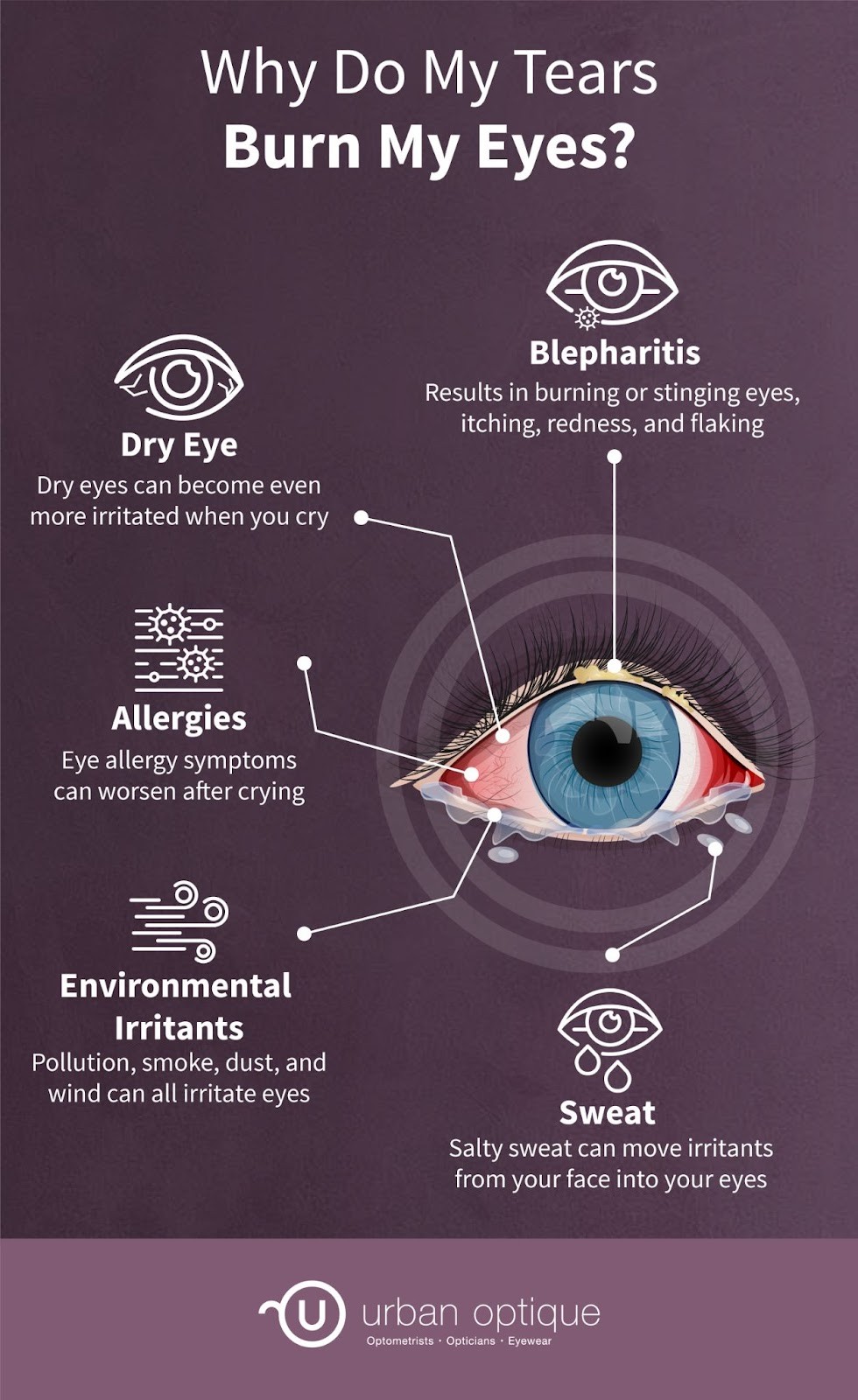Tears, designed to protect and lubricate our eyes, can sometimes cause a burning sensation. This uncomfortable feeling can be alarming, but understanding the causes and available treatments can provide relief. This article explores the reasons why tears might burn like acid and offers solutions to alleviate the discomfort.
The Composition of Tears
Tears are more complex than just water. They consist of three crucial layers working together to maintain eye health:
- The Aqueous Layer: This watery layer, rich in electrolytes like sodium and potassium, provides essential hydration to the eyes.
- The Lipid Layer: An oily layer that prevents tear evaporation and ensures smooth eyelid movement, reducing friction and irritation.
- The Mucin Layer: This layer allows the watery layer to spread evenly across the eye’s surface, ensuring consistent lubrication and protection against foreign particles.
These layers, along with components like lysozyme and lactoferrin, safeguard against infections.
Common Culprits Behind Burning Tears
Several factors can contribute to the burning sensation in your eyes:
Dry Eye Disease
Insufficient tear production or rapid tear evaporation, characteristic of dry eye disease, leads to dryness and irritation. This can intensify when crying, as the eyes struggle to compensate for the lack of moisture. Symptoms include burning, stinging, and a gritty feeling.
Blepharitis: Eyelid Inflammation
Blepharitis, inflammation of the eyelids, often caused by allergies, poor hygiene, or bacterial infections, can cause burning, itching, redness, and crusting around the eyes. Crying can exacerbate these symptoms.
Allergic Reactions
Exposure to allergens like pollen, pet dander, or dust mites triggers allergic reactions, resulting in itchy, red, and burning eyes. Crying can worsen these pre-existing allergy symptoms.
Environmental Irritants
Airborne irritants such as pollution, smoke, dust, and wind can irritate sensitive eyes, causing burning and discomfort. This is often amplified when crying.
Sweat and its Effects
The sodium content in sweat can irritate the eyes, leading to a burning sensation. Sweat can also carry irritants like makeup or skincare products into the eyes, further contributing to discomfort. This can be particularly noticeable when crying after physical activity.
Effective Treatments for Burning Tears
Fortunately, various treatment options are available to address burning tears:
Artificial Tears for Relief
Over-the-counter artificial tears can supplement natural tear production, lubricating the eyes and alleviating dryness and burning. Consulting an eye doctor for recommendations is advisable.
Allergy Medication to Combat Irritants
Antihistamines, available as oral medication or eye drops, can effectively manage allergy-related burning sensations by blocking histamine, the chemical responsible for allergic reactions.
Warm Compresses for Soothing Relief
Warm compresses applied to the eyes can help unblock oil glands in the eyelids, reducing inflammation and relieving burning associated with conditions like blepharitis.
Medicated Eye Drops for Infections
Bacterial or viral eye infections may require prescription eye drops containing antibiotics or antiviral medications to eliminate the underlying cause of burning and discomfort.
Seek Professional Help for Lasting Relief
If you experience persistent burning tears, consulting an eye doctor is crucial for accurate diagnosis and personalized treatment. They can determine the root cause of your discomfort and recommend the most effective solutions to provide long-lasting relief. Don’t let burning tears compromise your eye health and well-being.


